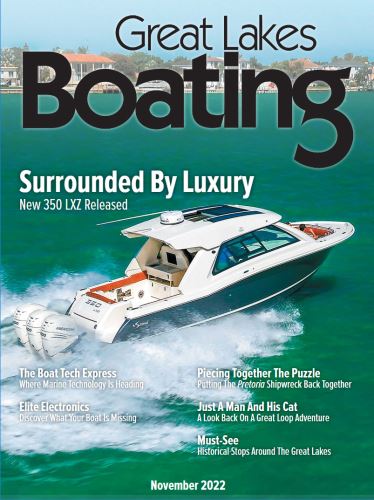Oswego, N.Y. — New York Sea Grant released a video today highlighting the value of king salmon to the Lake Ontario ecosystem and local economies. Cornell University researchers and Sea Grant personnel are utilizing newly-developed freshwater pop-off satellite archival tags to collect unprecedented data about salmon movement and behavior.
“These freshwater pop-off tags,” New York Sea Grant Fisheries and Ecosystem Health Specialist Jesse Lepak says, “allow for a unique view into the behavior of the fish and will provide data of interest to researchers, aquatic resource managers, and anglers. For example, the tags are equipped with accelerometers indicating when the fish are swimming quickly to catch prey. Sea Grant will be sharing that information with the recreational anglers and charter services that are key economic drivers of the Lake Ontario regional economy.”

This kind of data is unprecedented in freshwater. For example, a tag that was placed on a mature salmon on July 13 in waters near Oswego, N.Y., was detected on August 31 near Cobourg, Ontario, Canada, 90 miles away. The recovered tag contains depth, temperature and acceleration for the fish recorded at one-second intervals for 49 days.
King salmon, also known as Chinook, were introduced into Lake Ontario to help control overabundant alewife prey fish populations in the 1960s and 1970s. King salmon grow larger in Lake Ontario than any other Great Lake and can reach lengths of more than three feet and weights of 30-plus pounds. With funding from New York Sea Grant, Dr. James M. Watkins of Cornell University’s Department of Natural Resources and biologist Dr. Christopher Perle of Florida State College, are analyzing the data from the tags that can provide up to 90 days of tracking information.
“With this tagging process,” Watkins says, “the fish become lake profilers. For example, data from the tags will track how closely the salmon follow their water temperature preference of 42 to 48 degrees Fahrenheit in the summer and when they choose to leave that preferred temperature to enter either warmer or colder waters in search of forage.”
Perle, with a background in marine electronic tagging research for the Pacific Ocean adds, “freshwater presents new challenges technologically for electronic pop-up tags. This Sea Grant project will not only provide information about king salmon as a key predator in the ecology of Lake Ontario, it is an opportunity to evaluate a new tag designed specifically for freshwater.”

“King salmon are the big draw for anglers in Lake Ontario,” Fish Doctor Charters Captain Ernie Lantiegne states, “and the main engine for its multimillion dollar salmonid fishery.”
Lantiegne is also a retired New York State DEC fishery biologist and is one of the few people on Lake Ontario to see the King Salmon through all its stages of growth on Lake Ontario.
Lantiegne’s charter service, along with Rochester Sport Fishing Charter, assisted in the production of the Learning More About Lake Ontario’s King Salmon video.
“The king salmon fishery of Lake Ontario can be seen as an an invaluable resource,” Rochster Captain Kip Mammano says, “and sustaining this world-class fishery should remain a priority for years to come.”
New York Sea Grant is a cooperative program of Cornell University and the State University of New York and one of 33 university-based programs under the National Sea Grant College Program of the National Oceanic and Atmospheric Administration.
For More Information:
www.nyseagrant.org

